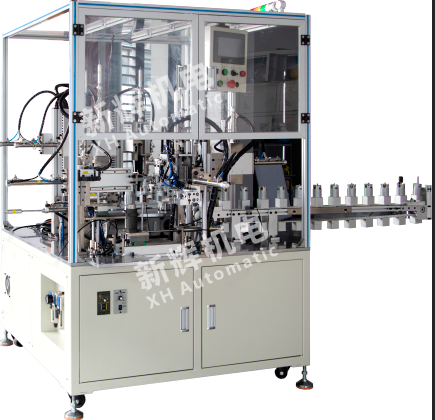What are the common electrical faults and solutions for DC motor motor fully automatic rear end dielectric assembly machine?
The following are common electrical faults and solutions for DC motor motor automatic rear end dielectric assembly machine:
1, power-related failures
Power can not be connected:
Failure causes: may be a broken power cord, loose plug, blown fuse, power switch damage.
Solution: check whether the power cord is broken, broken, if any, replace the power cord; make sure the plug is tight; check whether the fuse is blown, if any, replace the fuse with the same specification; if the power switch is damaged, you need to replace the switch in time.
The power supply voltage is too low or unstable:
Failure causes: may be the grid voltage fluctuations, power lines are too long or too thin resulting in too large a voltage drop, power supply equipment failure.
Solution: use a multimeter to measure the power supply voltage, if the voltage is lower than the rated voltage, you can contact the power supply department to adjust the grid voltage; for the case of the line is too long or too thin, you can replace the thicker power line or increase the voltage stabilizing equipment; if the power supply equipment is faulty, you need to repair or replace the power supply equipment.

2、Motor winding failure
The winding is short-circuited:
Failure causes: may be a long time motor overload operation, insulation aging, moisture, mechanical damage to the winding.
Solution: Use insulation resistance meter to measure the insulation resistance of the winding, if the insulation resistance is too low, the winding may be short-circuited. For the case of a light short-circuit, the winding can be dried, dipped in paint and other insulation treatment; if the short-circuit is serious, it is necessary to replace the motor winding.
The winding is disconnected:
Failure causes: may be loose winding joints, poor welding, broken wires, etc..
Solution: Use the resistance of the multimeter to measure the resistance of the winding, if the resistance is infinite, the winding is disconnected. Check whether the winding joints are loose, if so, reconnect and weld firmly; if the wire is broken inside, you need to find the broken point and repair or replace the winding.
3、Brush and commutator failure
Brushes are badly worn:
Failure causes: brushes will gradually wear out during long-term use, and when worn to a certain extent, the contact area with the commutator decreases and the contact resistance increases, resulting in a decline in motor performance5.
Solution: Regularly check the wear of brushes, when the brush length is less than the specified value, the brushes should be replaced in time. At the same time, check whether the spring pressure of the brushes is normal or not, if there is any abnormality, the spring needs to be adjusted or replaced.
Poor contact between brush and commutator:
Failure causes: may be the brush surface oil, impurities, the commutator surface is not smooth, there is an oxide layer or mica protruding, etc. 3.
Solution: wipe the brush and commutator surface with a clean cloth dipped in a small amount of alcohol to remove oil and impurities; if the surface of the commutator is not smooth, sandpaper can be used to gently sanding; for the mica protruding case, the need for the commutator to be turned processing, so that the mica below the surface of the commutator.
4、Control circuit failure
Contactor failure:
Failure causes: contactor contacts may be worn and oxidized due to long-term use, resulting in poor contact; the coil may be damaged due to overheating, short-circuit and other reasons1.
Solution: Check the contacts of the contactor, if worn or oxidized, the contact surface needs to be sandpapered or replaced; if the coil is damaged, measure the resistance of the coil and replace the coil after determining the damage.
Relay failure:
Failure causes: the contacts of the relay may have poor contact due to arc ablation, mechanical wear, etc.; the coil may be damaged due to over-voltage or over-current.
Solution: Check the contacts of the relay, if there is ablation or wear, sandpaper or replace the contacts; measure the resistance of the coil to determine whether the coil is damaged, and replace the coil if it is damaged.
5、Sensor failure
The sensor is damaged:
Failure causes: the sensor may be damaged during long-term use due to vibration, shock, high temperature, humidity and other factors.
Solution: Check the appearance of the sensor whether there is damage, deformation, etc., if any, then replace the sensor; the use of professional testing equipment to detect the sensor, to determine whether it is working properly, if not normal, then need to be replaced.
The sensor signal is inaccurate:
Failure causes: may be improper installation position of the sensor, there are sources of interference around, the sensor itself, such as the decline in accuracy.
Solution: Adjust the installation position of the sensor to ensure that it is firmly installed and can accurately detect the signal; check whether there are electromagnetic interference sources around the sensor, if so, take shielding measures; if the sensor accuracy has decreased, the sensor needs to be calibrated or replaced.
※ If you still can't solve the problem by the above ways and means, please contact the technical specialist of Xinhui Electromechanical Equipment Co.







